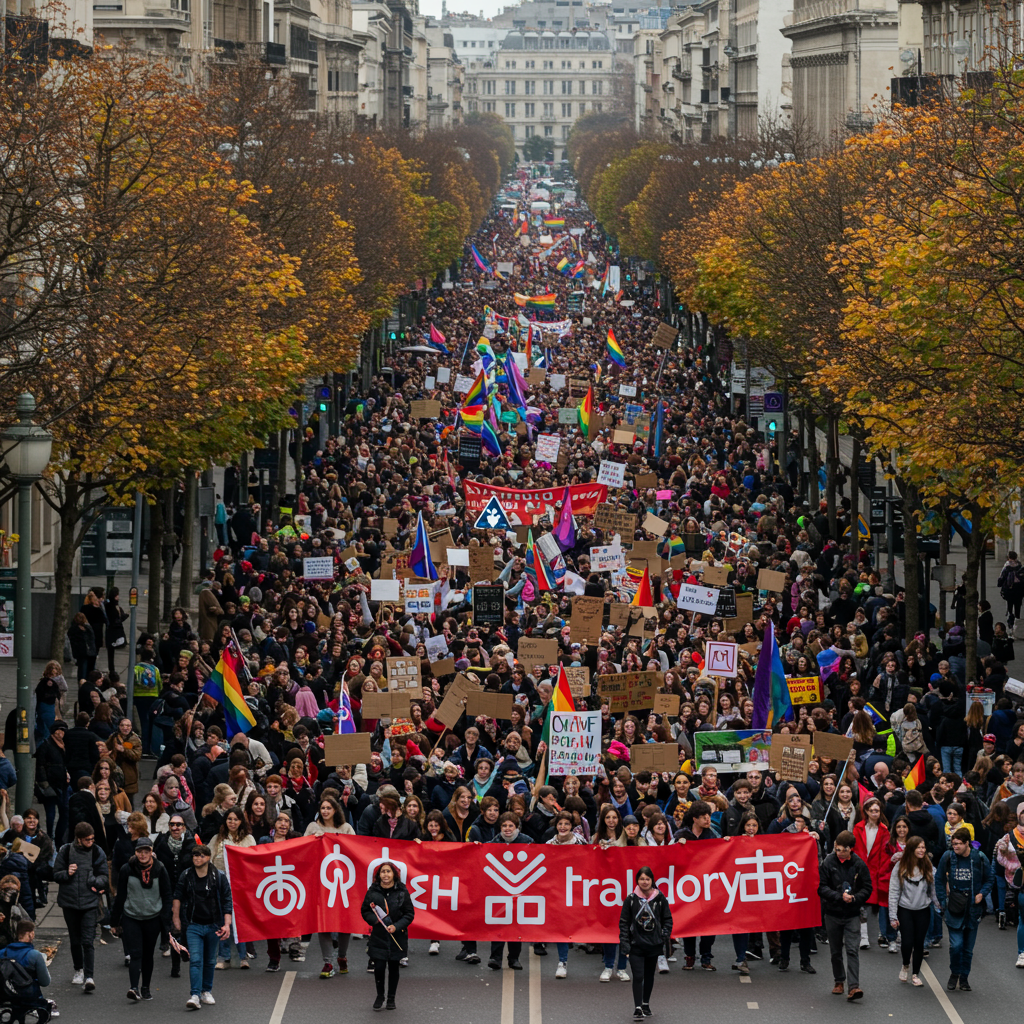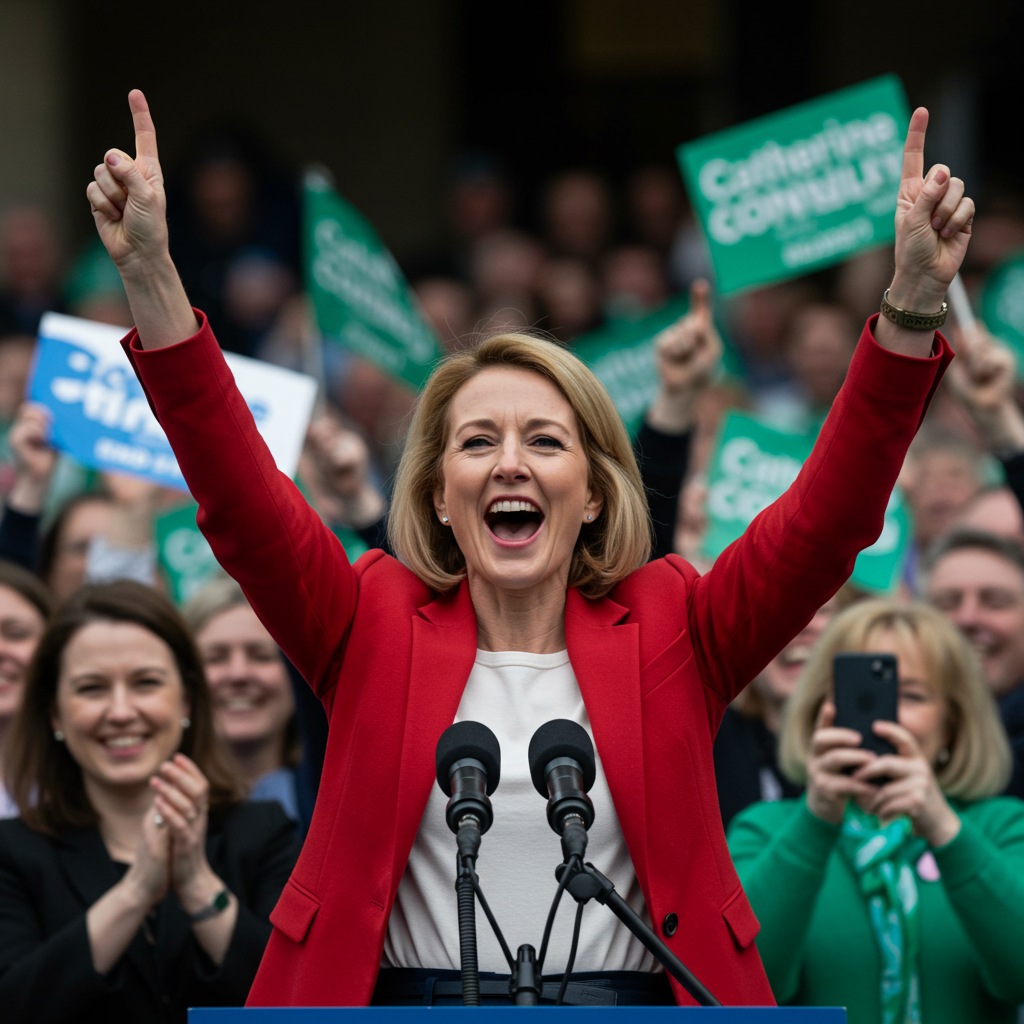Saturday, June 28, 2025, brought unexpected tension to budapest. For three decades, the city’s annual pride celebration unfolded joyfully. This year was different. Hungary’s influential Prime Minister, Viktor Orbán, known for his authoritarian leanings, took an unprecedented step. He explicitly banned the event. It was the first time in its 30-year history. This action mirrored growing anti-LGBTQ+ movements globally. It aligned Hungary with a concerning trend of suppressing visibility and rights. The ban followed earlier laws severely limiting same-sex adoption, marriage equality, and legal gender recognition for transgender people.
Hungary’s Ban Strategy and Intimidation
Prime Minister Orbán’s administration based the ban on a contentious law. His ruling party passed it in March 2025. This legislation made it a crime to host or attend events that “depict or promote” homosexuality to minors under 18. The government framed this as safeguarding children’s moral development. They explicitly stated Budapest Pride was the primary target. This law drew power from a recent constitutional change. That amendment elevated children’s rights to moral development above basic freedoms like peaceful assembly. Hungary became the first European Union country to attempt a full ban on a Pride parade. Many saw this move as emboldened by figures promoting anti-diversity stances, such as former US President Donald Trump.
Authorities deployed several tactics to enforce the prohibition. They aimed to deter participation. Reports indicated police installed extra surveillance cameras. Some had facial recognition capabilities. These were placed along likely march routes to identify attendees. Individuals received warnings about substantial fines. Simply showing up could cost up to 200,000 Hungarian forints (around $586 USD or €500 EUR) per person. Organizers faced harsher threats. Arrest and potential jail time, reportedly up to a year, loomed over them. The government also seemed to strategically allow small groups of far-right counter-protesters. They gathered near expected routes. This increased the risk of clashes. It potentially created a reason for police intervention.
This climate generated significant fear. Longtime organizer Kristof Steiner, a well-known LGBTQ+ figure previously targeted by government campaigns painting Pride as a child threat, awoke with deep worry. Some potential attendees hesitated. Media reports suggested corporate sponsors withdrew support. They perceived the risks of associating with a banned event as too high.
Defiance Emerges: A Municipal Workaround
Despite the government’s firm stance, organizers planned a bold counter-move. Police had repeatedly refused to register the march under the new law. Organizers found a crucial ally in Budapest’s liberal Green Party Mayor. Gergely Karácsony offered his support. Mayor Karácsony declared the planned Pride gathering a distinct municipal event. He cleverly renamed it “Budapest Pride Freedom.” His legal argument was simple: municipal events didn’t need national police approval. This was a direct attempt to bypass the central government’s ban.
The Orbán government remained defiant. The Justice Minister sent a stern warning directly to Mayor Karácsony. It stated that organizing or encouraging attendance could lead to significant legal trouble. This included the threat of up to a year in prison. Police refused to recognize the Mayor’s classification. Lawyers advising potential marchers suggested attendees ignore potential citations. They anticipated fines might be issued later. This would be based on the extensive camera footage authorities planned to collect. Amidst this legal and political uncertainty, both sides knew the actual turnout would be the deciding factor.
An Unprecedented Wave of Solidarity
Political analysts believed Orbán’s primary goal was reducing attendance. A small crowd would let the government claim success. It would reinforce their narrative against LGBTQ+ visibility. It could encourage further restrictions. This move also came as Orbán faced pressure from a new conservative rival, Peter Magyar. Magyar’s growing popularity ahead of national elections presented a challenge. Using the ban was seen as a way to energize Orbán’s rural conservative base. Anti-LGBTQ+ sentiment is often stronger there.
Saturday morning arrived with initial reports suggesting fear might have won. Kristof Steiner neared the planned starting point near Budapest City Hall. He felt a surge of anxiety. The area initially appeared less crowded than in previous years. His stomach tightened with worry. Had the government’s tactics worked?
Then, everything shifted. More people began arriving. Steiner and the organizers watched in stunned disbelief. The area quickly filled. Then it overflowed. The planned route became packed. Crowd density far exceeded all expectations. Police did not provide official counts. However, estimates from Hungarian media, international journalists, and organizers later ranged between 100,000 and 200,000 people. This wasn’t just a large crowd. It was reportedly the biggest Budapest Pride in its 30-year history. It vastly surpassed the previous record of around 35,000.
The mood transformed dramatically. Apprehension gave way to determined defiance. Police officers were visibly present. Yet, overwhelmed by the sheer numbers, they ended up rerouting the march. This avoided planned clashes with counter-protesters. They did not stop the event. The crowd pulsed with vibrant energy. Participants danced. Music filled the air. A sea of rainbow and anti-government flags waved defiantly. The march proceeded through the city center. It crossed the iconic Erzsébet Bridge over the Danube River. This created a powerful, highly visible statement of resistance. It pushed back against state suppression.
Broad Support and International Scrutiny
Crucially, the massive turnout extended far beyond the immediate LGBTQ+ community. A significant portion of attendees were described as straight allies. Many wore ordinary clothes, not typical Pride attire. Their widespread presence signaled robust public backing. It showed support for the event and its core message. It demonstrated resistance to government policies went beyond the specific community targeted. Mayor Karácsony was also visible in the crowd. He celebrated the unexpected, overwhelming turnout with participants. Participant Blanka Molnár described the record attendance despite the ban as a “fantastic feeling.” She stressed it was “increasingly important” for Hungarians, including first-time attendees, to resist the government.
The event drew significant international attention and support. Over 70 members of the European Parliament traveled to Budapest to participate. Numerous officials from other European countries joined them. Their presence offered powerful solidarity with Hungarian civil society. It was a direct rebuke to the government’s ban. Hadja Lahbib, the EU’s Commissioner for humanitarian aid and crisis management, highlighted the international focus. She stated that “all eyes are on Budapest” as marchers openly defied the decree. This international backing emphasized the event’s significance beyond Hungary’s borders. It framed it as a test case for democratic norms and fundamental rights within the EU.
Political Implications and a Symbol of Resistance
Commentators and analysts immediately saw the massive turnout as a significant political blow to Prime Minister Orbán. He had essentially promised his conservative base and the international community that Pride would not occur, or would be severely diminished. The unexpected scale directly undermined that promise. It exposed limits to his government’s ability to suppress public assembly. This was especially true when met with widespread civil disobedience. Political experts like Peter Kreko called it a “huge win for Karácsony and the opposition voters.” He described it as a clear “loss for Orbán.” Even his rival Peter Magyar later publicly sided with the “victims” of the ban. Another participant, András Faludy, dismissed the “hysteria” surrounding the event as “damn pathetic” and “nonsense,” expressing his anger at the government’s stance. Zsófia Szekér viewed the huge crowd as evidence that a significant part of society desires a change in Hungary. She believed change is possible only when many people take to the streets.
While the success might not immediately unseat Orbán, strategists suggested it seriously damaged his carefully built image of invincibility. For an authoritarian leader, maintaining this image of control is vital. Balint Ruff, a Hungarian campaign strategist, compared the event to historical moments in Hungary. Large public gatherings sometimes signaled a shift in public mood. He suggested it represented a point where many felt they “had had enough.” Enough of the government’s actions and policies. The collective defiance served as a powerful symbol of resilience. It showed public will and solidarity can push back. This is true even when facing severe legal threats and intimidation.
Participants themselves articulated that the march was about more than defending minority rights. They viewed it as a stand against what they saw as growing suppression of democratic processes. It was a pushback against fundamental freedoms under Orbán’s increasingly centralized, restrictive rule. Kristof Steiner’s personal experience mirrored the broader shift. He started with fear. He finished overwhelmed with joy and deep pride. The huge, unexpected display of support felt less like a narrow protest. It felt more like a fundamental fight for basic freedom and democratic values for everyone in Hungary. The event transformed. It went from anticipated defiance to a powerful celebration of community, widespread public backing, and lasting resilience against authoritarian pressure. It proved collective action remains essential in asserting fundamental rights.
Frequently Asked Questions
Why did Hungary’s government attempt to ban Budapest Pride?
The Hungarian government, led by Prime Minister Viktor Orbán, tried to ban Budapest Pride based on a March 2025 law. This law criminalizes events promoting homosexuality to minors under 18, framed as protecting children’s moral development. It leveraged a new constitutional amendment prioritizing children’s rights over freedoms like assembly. The government explicitly targeted Pride, fitting Orbán’s broader anti-LGBTQ+ policies which include restrictions on adoption, marriage, and legal gender changes. This made Hungary the first EU country to attempt banning a Pride march.
How did Budapest Pride proceed despite the official ban?
Organizers overcame the ban by working with Budapest Mayor Gergely Karácsony. He declared the gathering a municipal event (“Budapest Pride Freedom”), arguing this didn’t require national police permission, despite police rejection. Participants attended knowing the risks of fines (up to €500) and potential legal action. The massive turnout, estimated between 100,000 and 200,000 people, made it impossible for police to stop. Instead, police managed the crowd, including rerouting the march, effectively letting the event happen through civil disobedience and sheer numbers.
What were the political consequences of the large Budapest Pride turnout?
The unprecedented turnout was seen as a major political setback for Prime Minister Orbán. By aiming to suppress or ban the event, he risked his image of control, vital for an authoritarian leader. The large scale was interpreted as a “huge win” for Mayor Karácsony and the opposition, showing broad public dissatisfaction extending beyond the LGBTQ+ community, including many straight allies. Political analysts viewed it as a significant blow to Orbán’s prestige and a symbol of powerful public resistance against his government’s restrictive policies and perceived erosion of democratic freedoms.
Word Count Check: ~1190



